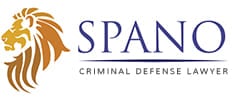Larceny and embezzlement are two closely related but distinct crimes against property. Embezzlement, which New York statutes refer to as grand larceny embezzlement, is a type of white collar crime that involves the misuse of property that one can legally access. Larceny, on the other hand, includes gaining unlawful access to another’s property. Both of these crimes encompass a large range of conduct and can be grounds for prosecution for other types of property crimes, such as billing fraud.
Larceny
Larceny is generally defined as taking another person’s property without his or her consent, with the intent to keep it. This means that whether the property in question is a change purse or a multimillion dollar bank account, it is now in the possession of the accused.
In some cases, the question of intent can become a central issue. There are certain types of behavior that courts generally see as indicating intent to take the property away permanently. These may include actions such as leaving the area. For example, a shoplifting case can be harder to prove if the accused has not left the store with the items he or she did not pay for. Other indications of intent can include spending the money, using the property, storing the property in one’s home or giving it to a third party.
Embezzlement
Embezzlement differs from larceny mainly through the nature of the access to the misappropriated property. Larceny involves an unambiguously unlawful means of taking control of the property, such as reaching into a pocket or bag, forging checks or hacking into an account. Embezzlement, on the other hand, is defined as unlawful use of property that is in one’s control or possession.
There are many scenarios in which a person will have control over property that does not belong to him or her personally. The most common case is that of an employee who has access to company or client accounts and diverts funds from them. New York courts typically require that the accused have possession of the funds, not just custody. This usually means not just having access but also having some amount of control over the property. A cashier who takes money from the till is less likely to be found guilty of embezzlement than an investment manager with discretion in handling client funds.
In order to prove embezzlement, prosecutors also must show that there was a fiduciary relationship. This means that the accused embezzler had an ethical or legal relationship with the property owner and owed that person a duty to care for the funds.
If you are accused of larceny, embezzlement or another white collar crime, it is important to start planning a defense strategy promptly. A knowledgeable defense attorney can analyze your case and develop a maximally effective defense.

